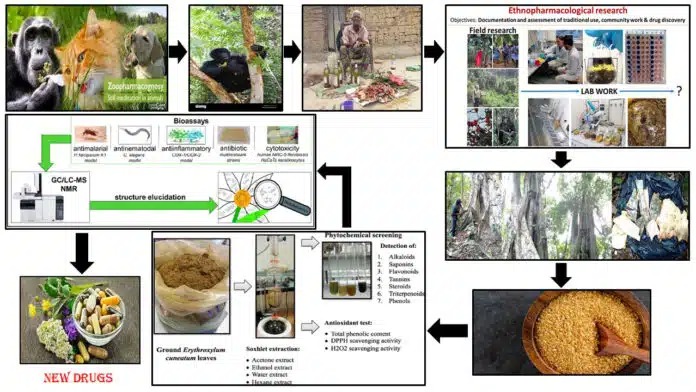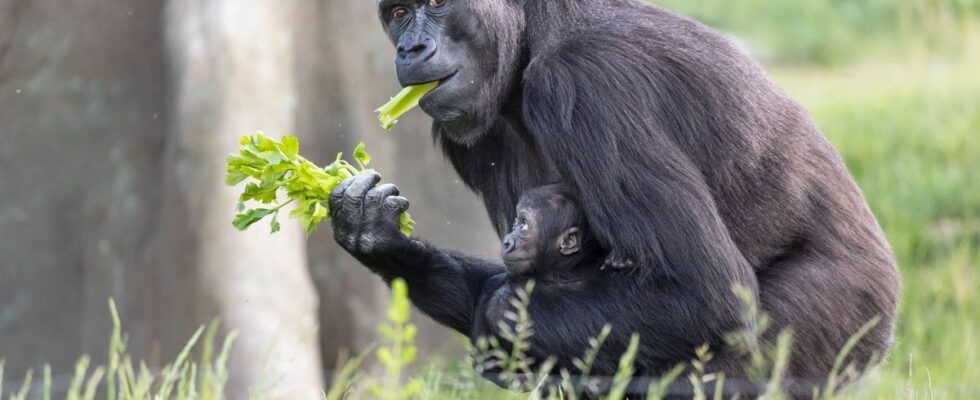Published on
updated on
Reading 2 min.
Gabonese researchers have been studying the diet of the great apes living in their country. They have observed that the gorillas consume medicinal plants capable of treating their illnesses. An observation that could lead to the discovery of new antibiotics.
Will gorillas be the source of the discovery of new antibiotic molecules? This is what researchers from the Interdisciplinary Center for Medical Research in Franceville, Gabon, hope. In a study published on September 11, 2024, they reveal that they have studied the plant consumption of gorillas in the Moukalaba-Doudou National Park, located in the country. These plants would not be chosen at random by the monkeys: they would be able to treat their diseases.
Great apes observed in their environment
Gabonese researchers report observing the behavior of western lowland gorillas. They recorded the types of plants the animals ate. Then they interviewed 27 people living in the nearby village of Doussala, including traditional healers and herbalists, about the plants used in local traditional medicine.
Result: Wild great apes often consume medicinal plants that can cure their illnesses. These same plants are often used by local populations in traditional medicine. Four plants in particular show antibacterial and antioxidant properties:
- cheese plant, a flowering plant whose scientific name is Ceiba pentandra ;
- of the giant yellow mulberry or Myrianthus arboreus ;
- African teak also called Excellent Militia ;
- of the fig tree or ficus.
Towards the discovery of new antibiotic molecules?
To go further, the researchers tested samples of bark from each plant to determine their antibacterial and antioxidant properties and studied their chemical composition.

The researchers found that the bark of all four plants had antibacterial activity against at least one multidrug-resistant strain of Escherichia coli bacteria. The cheese tree showed “remarkable activity” against all E. coli strains tested. All four plants contained compounds with medicinal effects, including phenols, alkaloids, flavonoids (capable of neutralizing free radicals) and proanthocyanidins.
This research thus provides preliminary information on plants with antibacterial and antimicrobial properties, and the four plants studied in this study could constitute promising targets for further research on drug discovery, particularly with the aim of treating multidrug-resistant bacterial infections, which are increasingly worrying experts.
The authors add: “Alternative medicines and therapies offer a certain hope for the resolution of many current and future public health problems. Zoopharmacognosy is one of these new approaches, aimed at discovering new drugs”.
And as such, regions rich in biodiversity, such as Central Africa, are home to a huge reservoir of unexplored and potentially medicinal plants.

